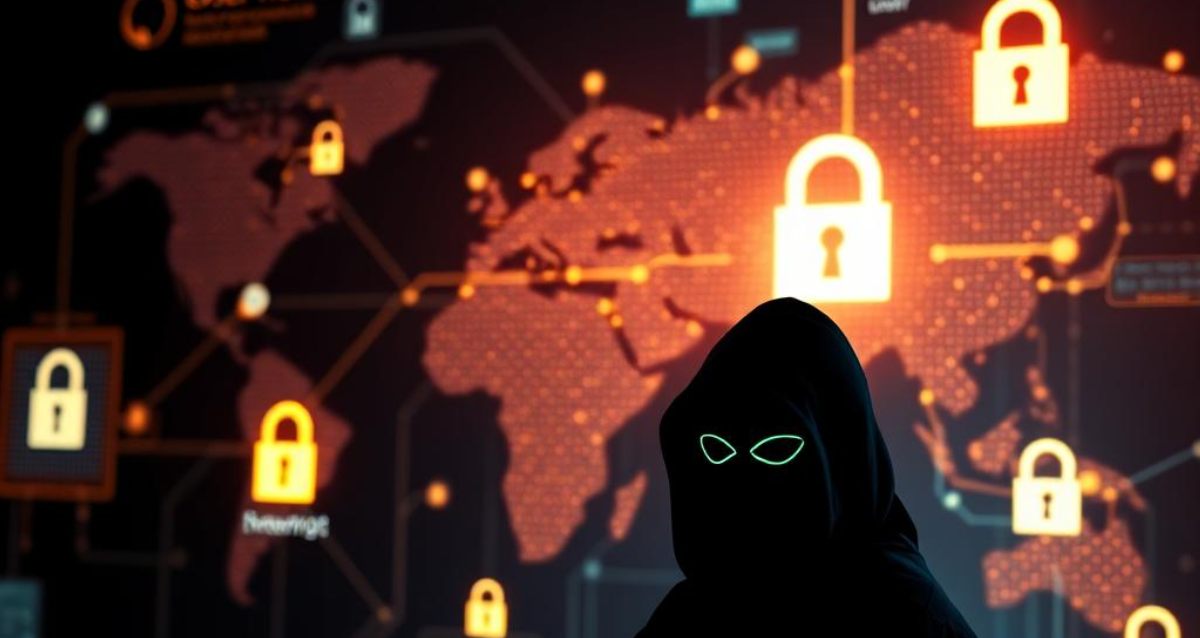Defenders perpetually pursue new methods to thwart assailants in the constantly changing cybersecurity landscape. The smokescreen is one such tactic, a deceptive defense strategy that is introduced. Defenders perpetually pursue new methods to thwart assailants in the constantly changing cybersecurity landscape. The smokescreen is one such tactic, a deceptive defence strategy intended to confound and mislead malevolent actors. Smokescreens establishes a digital ghost that protects critical systems by concealing valuable assets and diverting attention from critical vulnerabilities. This approach protects private information and lets companies gather knowledge about possible hazards, strengthening their security posture.
In the contemporary digital scene, cyberattacks are more complex than they were years ago. Although conventional security policies are vital, they generally fall short of providing complete defence. What is smokescreen in cyber security?
This is the point at which obfuscation strategies are implemented. Similar to a magician’s misdirection technique, these strategies redirect the attention of assailants, thereby protecting critical systems and leaving them bewildered. By implementing digital deception, organizations can mitigate their attack surface and outmanoeuvre cybercriminals.
Table of Contents
What is Smokescreen in Cyber Security?
Fundamentally, What is a smokescreen in cybersecurity? Refers to a proactive defensive approach meant to confuse and mislead cyber attackers through dishonesty. It’s like arranging a phoney treasure chest in a maze, sending attackers on a wild goose hunt while the actual riches stay undercover. A strong security system must include this approach as it protects private information and enables companies to learn more about possible hazards.
What is Firewalking in Cyber Security?
Security experts apply the method known as “firewalking” to evaluate a system or network’s security stance. Security alarms are purposefully set off to evaluate the efficacy of detection and response systems. Knowing practices like firewalking alongside what is smokescreen in cyber security? guarantees a strong defensive plan.
What is the mechanism of a smokescreen?
A smokescreen obscures priceless valuables using artificial illusions instead of actual smoke. Usually, the procedure consists in:
Decoy Deployment: Smokescreen solutions cover the network with false assets such as passwords, files, and bogus servers.
Assailant Engagement: When an assailant interacts with a decoy, alarms are sent off, and insightful analysis of their tactics, techniques, and procedures (TTPs) results.
Threat Detection: Analyzing attacker activity on decoy systems helps security teams see possible hazards before reaching essential targets.
Incident Response: Minimizing damage depends mostly on timely identification and reaction to assaults. Smokescreen solutions may speed incident response by providing unambiguous proof of hostile behaviour.
Essential Strategies in Smokescreen Defense
What is smokescreen in cyber security? Smokescreen defence employs misleading strategies to confuse and mislead attackers, safeguarding critical infrastructure and assets.
1. Decoys Systems
To mislead attackers, decoy systems replicate actual assets such as databases or servers. Often indistinguishable from legitimate resources, these systems attract thieves to attack instead of the actual infrastructure. In Cybersecurity, what is Smokescreen? A fundamental component is decoy systems.
2. Honeypots and Honeynet construction
Honeypots are specifically tailored decoys used to attract attackers. A honeynet is an aggregate of honeypots cooperating. Security teams may observe attackers’ behaviour and strategies by drawing them into these traps and obtaining necessary knowledge.
3. Strategy for Misdirection
Steering intruders away from critical systems includes creating false clues such as misleading data or bogus system logs. It’s like confusing pursuits by leaving a false trail in a jungle.
4. Inject False Data
Including misleading or fraudulent information in systems will help to further perplex attackers. Establishing phoney user identities or false network activity might make it more difficult for fraudsters to find their actual targets.
5. Network Shadowing
Obfuscating network architecture is hiding the actual structure of a network using VPNs, proxies, or complex encryption techniques. Attackers find it challenging to map out their surroundings.
What is the purpose of constructing a smokescreen?
There are numerous substantial advantages to employing a smokescreen:
1. Improved Identification of Threats: By drawing attackers into decoy systems, companies may identify possible hazards early on, even those that avoid conventional security measures.
2. Information Data gathering: Honeypots and related strategies provide teams with helpful information about attacker strategies, enabling them to remain one step ahead.
3. Diversion of Facilities: Smokescreens cost attackers time and resources, postponing their advancement and aggravating their attempts.
4. Diminished Area of Attack: Organizations minimize their attack surface by concealing important assets behind layers of deception, lowering the likelihood of successful intrusions.
Awareness of these advantages emphasizes the need for what is smokescreen in cyber security? as part of a defensive plan.
Constraints of Smokescreens
Although smokescreens are beneficial, they are not an ideal solution. Poorly constructed smokescreens may even backfire and reveal vulnerabilities instead of concealing them, and sophisticated assailants may be able to penetrate the disguise. Consistent observation and diligent preparation are essential for effective execution.
Screens: The Organization
The organization’s leading cybersecurity startup, Smokescreen, provides a complete deception technology system to guard against modern cyberattacks. Their primary offering, Illusion BLACK, uses hundreds of special deception tripwires to identify and stop invaders. This device actively embodies what is smokescreen in cyber security.
Honeypots and a smokescreen
In deception technology, honeypots are a particular kind of decoy device employed. Their intended attraction and trap ability lets security teams track attackers’ actions and compile insightful data. Understanding depends on honeypots. what is smokescreen in cyber security?
Chemistry’s smoke screen

In chemistry, a smoke screen is a cloud of smoke or gas that hides smells or impairs eyesight. Military and industrial uses of it are somewhat common. However, in another context, it clarifies the misleading aspect of “smokescreen.” what is a smokescreen in cyber security?
Case Study: The Targeted Data Assault
Target suffered a significant data breach in 2013, impacting millions of records. Employing a smokescreen, attackers used a Distributed Denial-of-Service (DDoS) attack to deflect attention from their primary objective. This underscores the need to use defensive smokescreen strategies to counteract such anomalies effectively.
Cyber attacks are complex and dynamic challenges for anyone responsible for cyber security.
Open-Source Deception Tools
Several open-source technologies enable companies to use deception tactics:
Honeyd: A honeyed system is designed to generate phoney systems and services.
Kippo: An attack credential capture honeypot meant to replicate SSH servers.
Dionaea: Designed to replicate different services, this adaptable honeypot framework is
By implementing these instruments, organizations may improve their security posture and more effectively defend themselves against cyberattacks. This also helps to clarify what a smokescreen is in cybersecurity.
Empirical Case Analyses
Numerous financial institutions use decoy servers to deceive attackers and gather intelligence. A counterfeit database containing “valuable” but fraudulent data may distract attackers while safeguarding the proper systems. This approach underscores the practicality of What is Smokescreen in Cybersecurity? For all those responsible for cybersecurity, cyberattacks present dynamic and complex challenges.
Final Words
Building strong defences against contemporary threats requires an awareness of what is a smokescreen in cybersecurity. A smokescreen is a potent weapon combining intelligence and dishonesty to defeat intruders. Although it’s not a stand-alone fix, it’s a significant component of a multi-layered security plan. Using smokescreens can help companies reverse the tide of cybercrime and protect critical assets. What is Smokescreen in cybersecurity? This creative solution lowers vulnerabilities, collects information, and confuses attackers. Companies seeking “What is Smokescreen in Cybersecurity?” should know how it strengthens defences. Simply put, what is a smokescreen in cybersecurity? It’s a modern strategy changing how risks are handled.
FAQs
1. What is smokescreen in cyber security?
A smokescreen is a deceptive defense strategy designed to mislead and confuse attackers, diverting them from critical assets and gathering intelligence.
2. How does a smokescreen enhance cybersecurity?
It enhances security by detecting threats early, gathering intelligence on attacker behavior, and diverting attacks from valuable assets.
3. Are smokescreens effective against all types of attacks?
While highly effective, smokescreens may not work against sophisticated attackers who can recognize deception. They work best as part of a layered defense strategy.
4. Can small businesses use smokescreens?
Yes, small businesses can easily leverage open-source tools like Honeyd or Kippo to implement basic smokescreen tactics.

